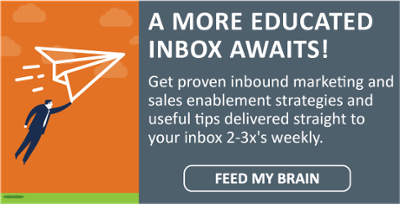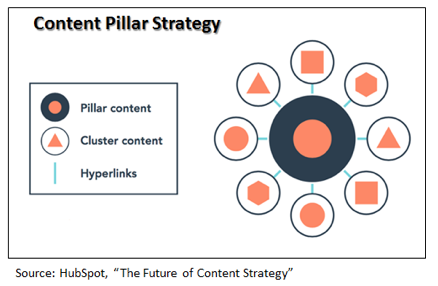8 Steps for Dealing with the Frustrations of Turning Website Visitors into Leads
 I was really frustrated because the Memorial Day holiday was approaching, and my gas grill decided it was time to give up the ghost.
I was really frustrated because the Memorial Day holiday was approaching, and my gas grill decided it was time to give up the ghost.
So I took Friday off and trudged to Home Depot.
After doing my due diligence I selected a really shiny fancy grill with way too many burners, a rotisserie, auto sensing temperature gizmo and what really sealed the deal – a free apron that said “Real Men Don’t Use a Recipe”. After shelling out some big bucks, I had the option of paying a few more coins for assembly, which I declined because after all, how difficult could it be to assemble a grill?
Oh boy.
 Little did I know that there were about 50,000 parts (I exaggerate .. only 39,500), but I was thankful that the parts list included a few teeny weeny Allen wrenches and some kind of strange tool that I think I probably should have used, but....
Little did I know that there were about 50,000 parts (I exaggerate .. only 39,500), but I was thankful that the parts list included a few teeny weeny Allen wrenches and some kind of strange tool that I think I probably should have used, but....
It sure was frustrating, and as I was wrestling with Part 13B and 456Z, I reflected upon a discussion I had a few days earlier with the marketing team at a mid-sized CPA firm that had invested money in a new website design, but were frustrated because they weren’t seeing any appreciable increase in leads. So, I thought that I would channel my frustration and theirs into this week’s blog about dealing with the challenges of converting site visitors into leads.
8 Steps for Generating Your First Online Lead
This firm’s problem was pretty simple to identify – the only ways that a visitor could convert to a lead was through their generic “Contact Us” form, or by calling the firm after a visit to their website (which wasn’t being tracked). They needed to put offers up and around the site based around non-advertorial thought leadership, and not sales collateral.
If you’re looking for more production out of your website than just serving as an online brochure, then it’s time to convert your website into a lead gen dynamo. It takes time, effort and resources to make this happen but once you get the ball rolling, you’ll find that your website can – and should be – a fundamental tool in your new business arsenal.
Here’s a guide to help get you on the way:
1. Get the infrastructure and marketing technology into place
You can’t do onsite lead gen without marketing technology that helps you acquire and monitor lead acquisition. Readers of my blog know that we’re HUGE fans of HubSpotbecause of its ability to accommodate all aspects of the lead generation, promotion and acquisition management process.
2. Select buyer persona
Onsite lead generation starts with the identification of the target market, specifically in terms of the demographics and psychographics of the buyer you wish to target. It helps to personify this market by creating a buyer persona profile – a key part of targeting the right message to the right person at the right time.
You can get a free template for creating a buyer persona from HubSpot here.
3. Identify a hot issue or key pain of the buyer persona
A critical step for creating an offer that you’ll use in your online lead gen is to identify an issue of pain point that will serve as the focal point for your offer. Think about regulatory or legislative changes that require compliance, or key changes in the buyer’s industry that are keeping them up at night. It may also help to consider the types of questions you’re getting from buyers, as they can offer be the catalyst for creating thought leadership, and consequently, an offer for that thought leadership.
 4. Develop and produce a thought leadership package that addresses this issue
4. Develop and produce a thought leadership package that addresses this issue
Next, it’s time to package and produce your thought leadership into an offer. Note that sales collateral IS NOT an offer! There’s a wide variety of ways to do this packaging – see the graph from theContent Marketing Institute for a list of the most popular ways that B2B firms are packaging and producing thought leadership “devices”.
5. Create a call to action button
Your online lead gen offer is going to require a call to action button that you can place in strategic locations throughout your website, in email, and in newsletters. Basically a call to action button is an image or line of text that prompts your visitors, leads, and customers to take action – for example, downloading an eBook or signing up for an event.
Check out the end of this blog for an example of a call to action button.
6. Create and publish a landing page
A landing page is a form where you collect contact and other information from a website visitor in exchange for the offer. There’s an abundance of guidance on best practices for landing pages, but what we’re always most interested in is the metric for conversion of landing page visitors to downloads ... we generally like to see a conversion rate of 25% or more. The marketing technology you use should provide templates for landing pages as well as an analytics capability to measure conversion rates, as well as the sources of leads.
7. Develop and execute an onsite promotional strategy
With an offer, call to action button and landing page in hand, it’s now time to promote your offer. The first step in the process is to strategically place your call to action button in and around your site. Do this with a fair degree of discretion – place that CTA where your buyer personas are most likely to visit – in relevant blog posts, on relevant website pages, and on appropriate subject matter expert bios.
8. Develop and execute an offsite promotional strategy
You’ll also want to promote you offer offsite, using a combination of social media and paid advertising like Google AdWords. Here, you’ll want to drive those eyeballs to your landing page where you can convert them into a lead.
Is the Lead Sales Ready After the 1st Download?
Probably not.
Just because someone has downloaded your offer doesn’t necessarily mean that there ready to listen to your sales pitch. One of the most annoying habits of marketers and the sales team is trying to get a prospect to engage in a sales conversation after the prospect has filled out a form.... “I saw that you downloaded our whitepaper.....”
Do you like when that happens to you? Hmmmm... I thought not. So why do you think that your prospects will appreciate a phone call after they convert, especially after a first time conversion?
Generating a TOFU (top of the funnel lead) is just the very first part of the process of turning a website visitor into a lead, and ultimately into a customer. There’s a number of nurturing steps ahead that can involve other forms of content and other offers that become increasingly advertorial. It’s now time to turn frustration into patience.
And speaking of time, it’s time to fire up the new grill and see my assembly frustration resolved. The family’s on the way over, the beer and soda is cold, and macaroni salad is perfect.
These just better be the best damn hotdogs ever.
.png)








Leave a Comment